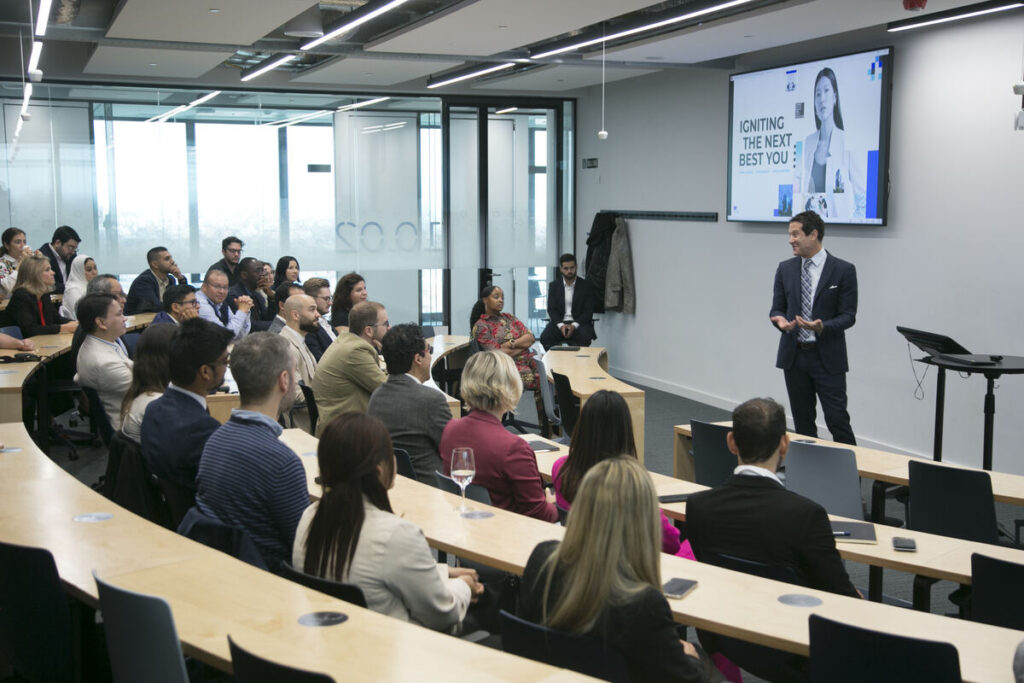Most businesses today understand the importance of digital transformation. Yet, change doesn’t come easy, and many professionals who are eager to step into the digital age don’t know what path to take to get there—or how to overcome those bumps in the road that they’ll inevitably encounter along the way. Let’s take a look at how digital transformation in marketing can be integrated despite challenges.
What does digital transformation mean?
Across industries and continents, “digital transformation” has become the buzzword of the moment. But what is digital transformation? Well, digital transformation is when a company adopts a new technology—or set of technologies—with the goal of making their business more efficient, more innovative and more successful.

Companies undergoing digital transformation typically intend to fundamentally change the way they operate and bring value to their customers.
In today’s tense and uncertain business climate, it’s clear that if businesses want to survive, they need to be thinking about their digital transformation.
What is digital transformation in marketing?
Digital transformation in marketing helps you connect with your customers and ultimately make more sales. Digital marketing now beats traditional marketing due to its reach, precise targeting, accurate metrics and the many tools that help you analyze your information. The digital transformation of marketing affects all aspects of a company.
Digital transformation in marketing starts as soon as a company signs up to social media or opens an online shop. Even internally, companies can use mobile applications for management of marketing, whereby there’s more control with sales, personnel and warehouse organization.
Being at the forefront of digital transformation and marketing is a serious benefit for companies.

Customer segmentation, digital media—they’re all key concepts of digital transformation and marketing. For good measure, here are three tips for those making the transition to digital marketing.
1. Ensure leaders support change
The CMO or CEO need to help initiate digital transformation in marketing. Results are always better when leaders of a company understand the need for change. So make sure your presentation is ready before you roll out any strategies without support from the top office.
2. Get your closer team’s buy-in
The battle of traditional marketing and digital marketing is well documented. If change is happening, then your close team have to be motivated. Find tools to help them learn digital marketing so they can help teach the rest of your colleagues.
3. Focus on company culture
To adapt to new technologies, our company must shift its culture. Put your customers front-and-center when trying to make this change. And try to empower your co-workers so that they become more digitally curious.
7 ways to implement digital transformation in marketing
Let’s get down and dirty with it. Here are 7 concrete ways to implement digital transformation in marketing that work.
1. Big data
Digital transformation has upped the amount of information online, especially via social networks and digital media. Big Data helps you analyze this information to understand consumer behavior.
2. Inbound marketing
Inbound marketing attracts customers by offering content related to their interests, rather than pushing advertising. Customers can therefore find your company via SEO content and social media.
3. Outbound marketing
Outbound marketing is the traditional approach where companies promote their products to a broad audience. This casts a broader net, with modern approaches including paid campaigns on Facebook Ads, Google Ads, and YouTube ads.
4. CRM
A CRM automates customer information management, giving us better control over customer interactions. It allows the marketing team to easily access and use customer data for their tasks.
5. Artificial Intelligence
Artificial intelligence (AI) simulates human behavior by collecting and analyzing data to make decisions. Tools like voice assistants, social networks and search engines use AI to understand user behavior. AI can also improve the sales funnel through machine learning and deep learning.
6. Product marketing
Product marketing involves designing a product based on what potential customers want and need. It’s about creating a product that appeals to a specific group of people, with the goal of attracting their attention and meeting their demands.
7. Social selling
Social selling is the process of making sales through social media. With millions of people using these platforms, social media helps build a brand, generate leads, and boost sales. The Social Media team handles this marketing approach.
The challenges when integrating digital transformations in your company
While there are many reasons a business might resist making the leap to undergo digital transformation, there are four key obstacles that most companies face:
Good old-fashioned fear of the unknown
Across surveys and industries, this is always the number-one challenge. By nature, humans like routine, so digital transformation can make employees feel threatened and too far outside of their comfort zone. How will this affect my job? What if I don’t understand it? Will a new system make my role redundant? Team members—from the CEO to the new intern—may be unwilling to face the risks and potential failures that come with tech-based innovation. And if individuals aren’t open to this change, how can entire organizations be?
Gartner’s vice president Graham Waller recently explained that change aversion is the most paralyzing barrier to transformation. His solution? Incorporating “cultural hacking”—or small interventions that alter behavior little by little—to shape the growth mindset necessary to develop, implement, and carry out transformation projects successfully. Digital transformation is a journey into the unknown, so having a team with the right mindset is key.
When you just can’t let go
Have you ever bought an expensive product that you weren’t crazy about, but continued using it because you already spent your hard-earned cash on it? The same happens with organizations.
Businesses that have invested exorbitant amounts of time and money into complex legacy systems can find it difficult to let go. And while sometimes these systems can be integrated with new technologies, this type of integration is hotly debated. A recent chat between CIOs showed many believing that using resources to integrate legacy systems with new digital ones is actually counterproductive, simply making bad processes run faster.
The key to true digitalization is to let go of the legacy in order to create new, value-adding products, services, and systems from scratch.
Money, money, money
Change isn’t just hard—it’s expensive. Many businesses say they don’t have the budget to properly embark on their journey to digital transformation. According to IDC, companies are already spending as much as 90% of their IT budgets on their current systems, which means there’s no money left over to invest in the future. The digital age moves at lightning speed, requiring resources like time and money in order to innovate. Those organizations who are spending the vast majority of IT resources on simply maintaining their current systems have a harder time getting ahead. So just like with the case of legacy systems, it’s time to rethink the allocation of resources and invest in tomorrow.
Leaders need transformations: Overcoming the biggest barriers to digital transformation
A successful digital transformation journey isn’t possible without a strong leader. That leader must have a clear vision of the end goal and the ability to communicate that vision to the team.
Many businesses fail to become their best digital selves because they didn’t start out with clearly outlined goals.

While a digitalization plan should be flexible, the purpose of the project should remain clear every step of the way. Leaders who lack the ability to communicate that vision have a hard time maintaining support for the transformation, both in the short term and the long term.
But it’s not enough for leaders to be strong and communicative. Just like team members, leaders must be resilient in the face of adversity. They need to get in the habit of receiving change with open arms and responding with sustainable, cutting-edge solutions. In short, leaders need to undergo transformation, too.
The solution: Our guidance around the top barriers to digital transformation
So how do leaders go about transforming? The key to taking on a change mindset lies in high-quality, up-to-date leadership training. Here at IE University, we’ve created an executive master’s program that is constantly updated to respond to the challenges outlined above. The Executive Master in Digital Transformation & Innovation Leadership helps mid- and senior-level business professionals up-skill to become the digital transformers that companies need right now—so they are well prepared to fight resistance to change, let go of legacy debt, and find creative solutions to budget restraints.
Master the art of digital transformation in marketing
Take your skill set to the next level with the Executive Master in Digital Transformation & Innovation Leadership.






